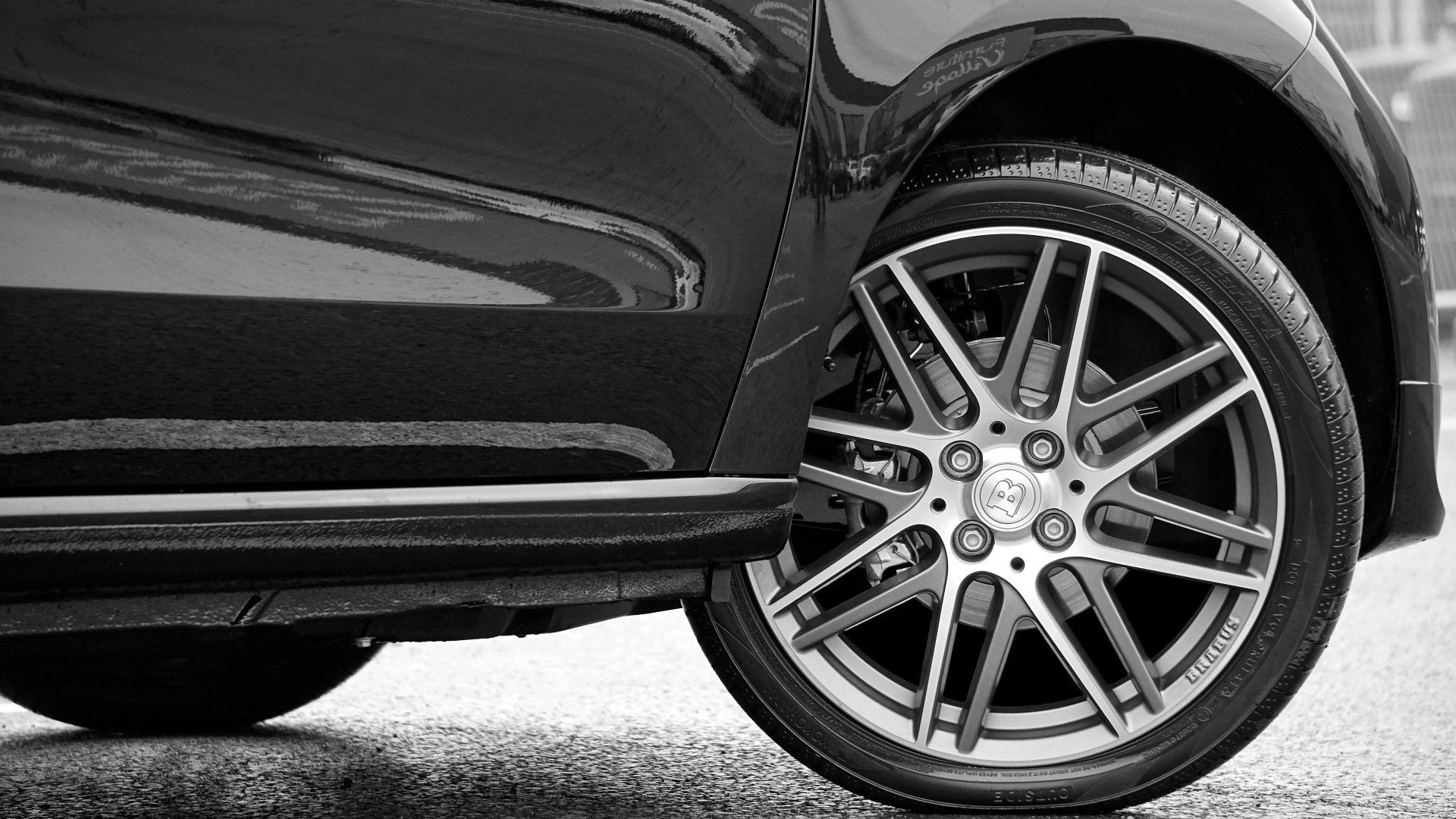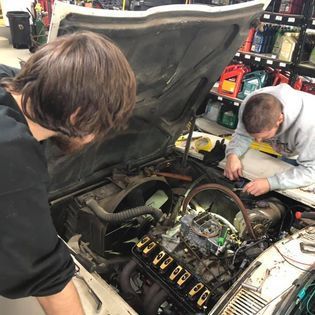A Comprehensive Guide to Tire Maintenance, Repair, and Replacement
Tires are an essential component of any vehicle, responsible for providing traction, absorbing shocks, and ensuring a smooth ride. However, many drivers underestimate the importance of proper tire maintenance, repair, and replacement. Neglecting these crucial aspects can lead to decreased performance, compromised safety, and costly repairs.
This post aims to provide drivers with all the information they need to effectively care for their tires, extend their lifespan, and make informed decisions when it comes to repair and replacement. Whether you're a seasoned driver or a beginner, this is a must-read for anyone looking to maximize the longevity and performance of their tires.
Tire Maintenance Is Crucial for Safety and Performance
Proper tire maintenance is crucial for both safety and performance reasons. Neglecting to take care of your tires can lead to various issues such as decreased traction, compromised handling, increased risk of accidents, and decreased fuel efficiency.
This section will highlight the importance of maintaining your tires and provide tips on how to properly care for them.
- Safety: The condition of your tires directly affects your safety on the road. Worn-out tires with insufficient tread depth can increase the risk of skidding and hydroplaning, especially in wet or slippery conditions. Bald tires have reduced traction and are more likely to lose grip, resulting in longer stopping distances and decreased control of your vehicle. Regularly inspecting and maintaining your tires will ensure that they are in optimal condition, decreasing the likelihood of accidents caused by tire failure.
- Performance: In addition to safety, proper tire maintenance also plays a significant role in the overall performance of your vehicle. Well-maintained tires provide better handling, improved stability, and enhanced braking capabilities. Maintaining the correct tire pressure ensures that your tires make proper contact with the road, maximizing traction and control. Additionally, properly inflated tires help optimize fuel efficiency, saving you money in the long run.
Understanding the Different Types of Tires
Choosing the right tire for your vehicle is vital for optimal performance, safety, and longevity. With various tire options available on the market, understanding the different types of tires and how they suit different driving conditions can help you make an informed decision.
Here are some of the most common tire types and their specific characteristics:
- All-Season Tires: As the name suggests, all-season tires are designed to provide satisfactory performance in various weather conditions, including light snow. They offer a balanced combination of traction, handling, and comfort. All-season tires typically have a tread pattern that enhances grip on both dry and wet surfaces. While they are suitable for most driving conditions, all-season tires may not perform as well as specialized tires in extreme winter or high-performance situations.
- Summer Tires: Summer tires, also known as performance tires, are designed for optimal performance in warm weather conditions. These tires offer excellent grip and handling on dry roads due to their softer tread compounds and specialized tread patterns. However, their performance can significantly decrease in colder temperatures or on snowy and icy surfaces. Summer tires are often chosen by drivers who prioritize performance and sporty handling.
- Winter Tires: Winter tires, also called snow tires, are specifically designed to provide superior traction, braking, and handling in cold weather conditions, including snow and ice. These tires feature a unique tread design with deep grooves and sipes that help to channel and disperse snow and water from the tire's contact patch. The tread compounds in winter tires remain flexible even in freezing temperatures, allowing them to maintain traction on slippery surfaces. If you live in an area with harsh winters and encounter snowy or icy roads, winter tires are highly recommended for enhanced safety and control.
- All-Terrain Tires: All-terrain tires are designed for pickups, SUVs, and off-road vehicles that frequently encounter a mix of on-road and off-road driving conditions. These tires feature a robust and aggressive tread pattern with larger tread blocks and deep grooves for improved traction on unpaved surfaces, such as gravel, dirt, and mud. All-terrain tires offer good performance both on and off the road but may not provide the same level of grip and handling on paved surfaces as dedicated highway or performance tires.
- Mud-Terrain Tires: Mud-terrain tires are specifically designed for extreme off-road conditions, including deep mud, rocky terrain, and uneven surfaces. These tires feature large, chunky tread blocks with wider spacing to help self-clean by expelling mud and debris. The aggressive tread pattern and reinforced sidewalls provide optimal traction, durability, and puncture resistance in challenging off-road situations. However, due to their aggressive nature, mud-terrain tires may produce more noise on paved surfaces and exhibit a stiffer ride quality.
- Touring Tires: Touring tires are designed for long-distance driving comfort, stability, and fuel efficiency. These tires offer a balanced combination of ride comfort, low noise, and reliable handling on highways and urban roads. Their tread pattern is optimized for reduced rolling resistance, promoting better fuel efficiency. Touring tires provide a smooth and comfortable ride, making them a popular choice for daily commuting and long-distance trips.
- High-Performance Tires: High-performance tires are designed for sports cars, luxury vehicles, and drivers who prioritize enhanced handling and grip. These tires offer superior traction, cornering stability, and precise steering response at higher speeds. High-performance tires feature specialized tread compounds and advanced tread patterns to maximize grip on dry and wet surfaces, providing excellent performance and enhanced driving dynamics. However, these tires may sacrifice some ride comfort and tread life compared to other tire types.
Choosing the right tire for your vehicle depends on various factors such as your driving style, geographical location, seasonal weather conditions, and specific performance requirements. Consulting with a tire specialist or referring to your vehicle manufacturer's recommendations can help you make an informed decision regarding the best tire type for your needs.
By understanding the different tire types and their specific characteristics, you can choose the most suitable tire for your vehicle, ensuring optimal performance, safety, and durability on the road.
Remember to regularly monitor tire pressure, check tread depth, and perform routine tire maintenance to maximize the lifespan and performance of your chosen tire type.
Tips for Proper Tire Maintenance
- Regularly check tire pressure: Use a tire pressure gauge to measure the pressure of each tire, including the spare tire. Refer to your vehicle's manual or the sticker on the driver's side door jamb for the recommended tire pressure. Underinflated tires can increase fuel consumption and wear out faster, while overinflated tires can lead to a harsher ride and uneven tire wear. Regularly check and adjust tire pressure to the recommended levels.
- Inspect tire tread: The tread on your tires provides traction and helps channel water away from the tire surface. Insufficient tread depth increases the risk of hydroplaning and reduces the tire's ability to grip the road. Use the "penny test" or a tread depth gauge to check the depth of your tire tread. If the tread is worn down to the treadwear indicators or is less than 2/32 of an inch deep, it's time to replace the tires.
- Rotate and balance tires: Regularly rotating your tires helps ensure even tread wear, prolonging the lifespan of your tires. Front tires tend to wear out faster than rear tires due to the weight distribution of the engine. Rotating your tires every 5,000 to 7,000 miles or as recommended by your vehicle manufacturer can help maintain even wear. Additionally, balancing your tires reduces vibrations and promotes a smoother ride.
- Alignment Check: Misaligned wheels can cause uneven tire wear and affect your vehicle's handling and stability. If you notice uneven tire wear or your vehicle pulls to one side while driving, it may be a sign of misalignment. Have your wheel alignment checked regularly to ensure proper tire wear and optimal performance.
By prioritizing proper tire maintenance, you can significantly improve your safety on the road, enhance your vehicle's performance, and extend the lifespan of your tires. Regular inspections, proper tire inflation, rotation, and alignment checks are essential practices that every driver should adopt to ensure their tires remain in top condition.
By following the safety tips and precautionary measures outlined in this handbook, you can prolong the lifespan of your tires, enhance traction and handling, improve fuel efficiency, and reduce the risk of tire-related incidents.
Remember, safe and properly maintained tires are a critical aspect of responsible driving.
In Peoria, call Big City Automotive to get your tires checked at (309) 339-7302.






